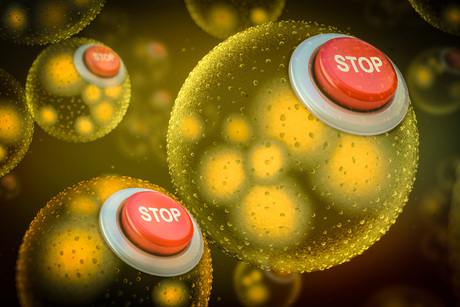Kill switches for synthetic bacteria

US researchers have developed ‘kill switches’ that can cause synthetic bacteria to die, making it safer for them to be used outside of a laboratory environment.
It is envisioned that genetically modified bacteria could one day be used in applications such as diagnosing and treating infection in the human body, monitoring toxins in rivers or improving crop fertilisation. But first, scientists will need to find a way to prevent these bacteria from escaping into the wider environment, where they might grow and cause harm.
There have been a number of attempts to develop kill switches for synthetic bacteria, including efforts to reprogram the entire genome of the organism to ensure that it requires the presence of certain amino acids or other chemicals in order to survive, divide and grow. However, this approach can be labour- and resource-intensive, and could introduce changes that might make the organism less useful as a monitoring or diagnostic tool.
Now, researchers from Wyss Institute at Harvard, MIT and the Broad Institute of MIT and Harvard have created two kill switches — dubbed ‘Deadman’ and ‘Passcode’ — which can cause synthetic bacteria to die without the presence of certain chemicals. Their work was led by MIT Professor James Collins and has been published in the journal Nature Chemical Biology.
“We are introducing stand-alone circuits that can be popped into any number of different organisms, without needing to rewire or change much of the genome in order for it to accommodate the switch,” said Professor Collins.
The Deadman switch is part of a bacterial strain that needs an external chemical to prevent a continuously expressed toxin from killing the cell. As explained by Professor Collins, the switch was motivated by the deadman brakes on old trains, which required a conductor to be in constant contact with the handle or pedal in order for the vehicle to move forwards.
The system consists of a genetic ‘toggle’ switch made up of two transcription factor genes. The switch can flip between two states, in which either one of the two transcription factor genes is turned on. The researchers altered the expression of these two transcription factors, leading to strong expression for one gene and weak expression for the other.
The presence of a small molecule keeps the switch in its weak state, but as soon as this is removed, the switch will flip to its strong state. The switch is programmed to express various toxins as soon as this strong state is turned on, with Professor Collins stating, “If the system does get flipped, by removing the small molecule, it would express toxins at a very high level that could then quite rapidly and readily kill off the bug.”
The Passcode switch, meanwhile, requires a specific combination of several chemical inputs in order to enable the genetically modified bacteria to survive and proliferate. The switch consists of a set of modular transcription factors that contain separate domains for sensing small molecules — the inputs — and for regulating gene expression. By mixing and matching these functional domains, the researchers constructed hybrid transcription factors in which different small molecule inputs are linked to the control of a specific promoter for gene expression.
If the transcription factors detect that the right combination of small molecules is present in the environment, then the bacteria will survive. But as explained by Clement Chan, a postdoc in Professor Collins’ laboratory and the lead author on the paper, “If any of the required inputs are not correct, then the bug will die.”
By using different transcription factors, the researchers can change the passcode combination of small molecules needed for the cell to survive. “It makes our biocontainment system much more flexible,” said Chan, “so you can apply the passcode system in a much wider range of applications.”
Having successfully tested the two kill switches in Escherichia coli, the researchers are now hoping to incorporate them into living diagnostic or therapeutic tools, designed to target a variety of bacterial infections.
Ancient lead exposure shaped human evolution
An international study claims that exposure to lead may have influenced the evolution of hominid...
Reproductive impacts of PFAS exposure revealed
New studies have found that PFAS exposure can significantly alter male reproductive health, and...
'Longevity gene' could reverse damage from rapid aging disease
A gene found in supercentenarians, who live exceptionally long lives, could counteract the...







